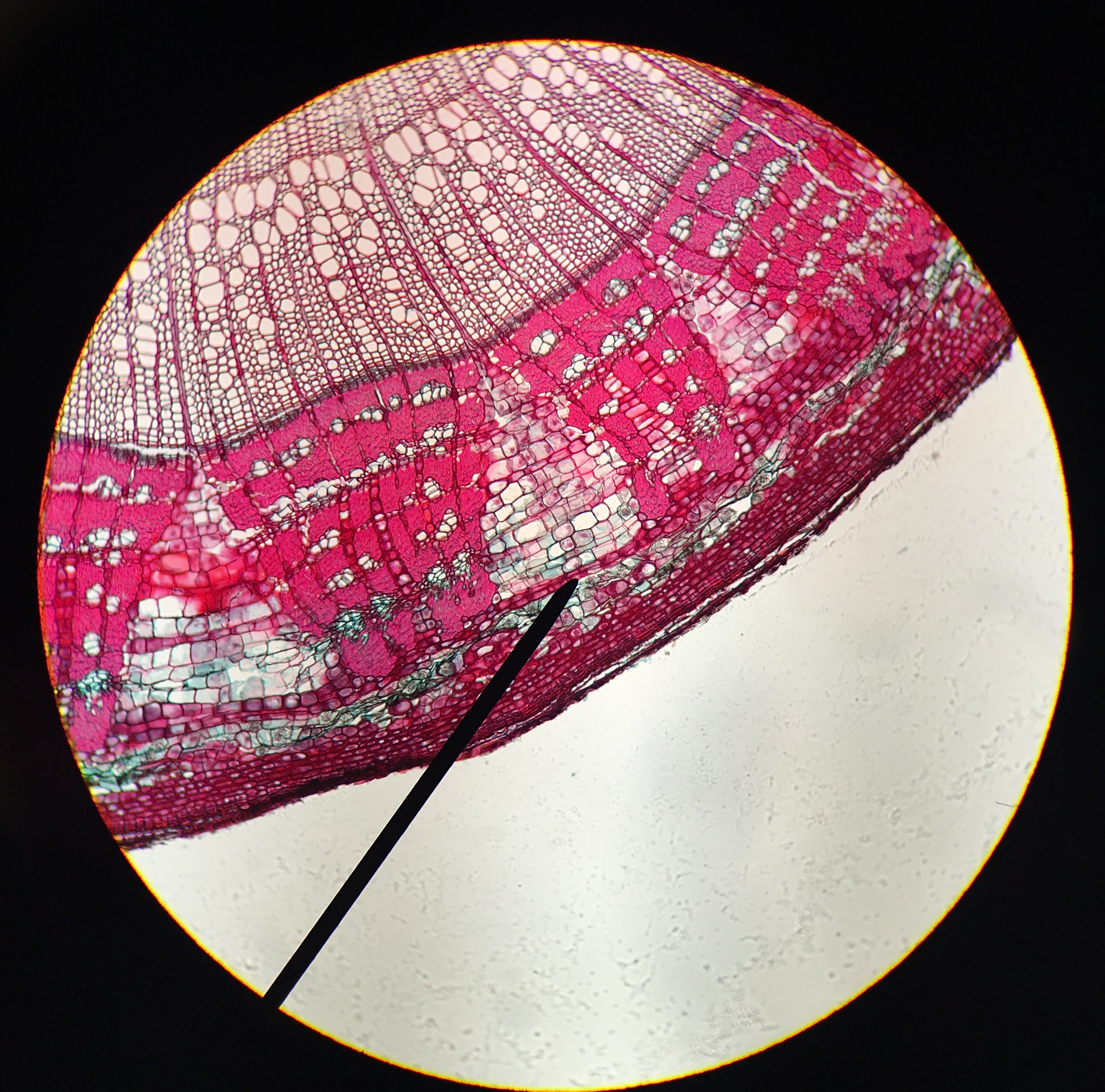Cambium (botany) on:
[Wikipedia]
[Google]
[Amazon]
 A cambium (: cambiums or cambia), in plants, is a tissue layer that provides partially undifferentiated cells for plant growth. It is found in the area between
A cambium (: cambiums or cambia), in plants, is a tissue layer that provides partially undifferentiated cells for plant growth. It is found in the area between
 A cambium (: cambiums or cambia), in plants, is a tissue layer that provides partially undifferentiated cells for plant growth. It is found in the area between
A cambium (: cambiums or cambia), in plants, is a tissue layer that provides partially undifferentiated cells for plant growth. It is found in the area between xylem
Xylem is one of the two types of transport tissue (biology), tissue in vascular plants, the other being phloem; both of these are part of the vascular bundle. The basic function of the xylem is to transport water upward from the roots to parts o ...
and phloem
Phloem (, ) is the living tissue in vascular plants that transports the soluble organic compounds made during photosynthesis and known as ''photosynthates'', in particular the sugar sucrose, to the rest of the plant. This transport process is ...
. A cambium can also be defined as a cellular plant tissue from which phloem, xylem, or cork grows by division, resulting (in woody plants) in secondary thickening. It forms parallel rows of cells, which result in secondary tissues.
There are several distinct kinds of cambium found in plant stems and roots:
* Cork cambium
Cork cambium (: cambia or cambiums) is a tissue found in many vascular plants as a part of the epidermis. It is one of the many layers of bark, between the cork and primary phloem. The cork cambium is a lateral meristem and is responsible for s ...
, a tissue found in many vascular plants as part of the periderm.
* Unifacial cambium, which ultimately produces cells to the interior of its cylinder.
* Vascular cambium
The vascular cambium is the main growth tissue in the stems and roots of many plants exhibiting secondary growth, specifically in dicots such as buttercups and oak trees, gymnosperms such as pine trees, as well as in certain other vascular ...
, a lateral meristem
In cell biology, the meristem is a structure composed of specialized tissue found in plants, consisting of stem cells, known as meristematic cells, which are undifferentiated cells capable of continuous cellular division. These meristematic c ...
in the vascular tissue of plants.
Uses
The cambium of many species of woody plants are edible; however, due to its vital role in thehomeostasis
In biology, homeostasis (British English, British also homoeostasis; ) is the state of steady internal physics, physical and chemistry, chemical conditions maintained by organism, living systems. This is the condition of optimal functioning fo ...
and growth of woody plants, this may result in death of the plant if enough cambium is removed at once. The cambium can generally be eaten raw or cooked, and can be ground to flour
Flour is a powder made by Mill (grinding), grinding raw grains, List of root vegetables, roots, beans, Nut (fruit), nuts, or seeds. Flours are used to make many different foods. Cereal flour, particularly wheat flour, is the main ingredie ...
for use in baking.
References
Plant anatomy {{Botany-stub